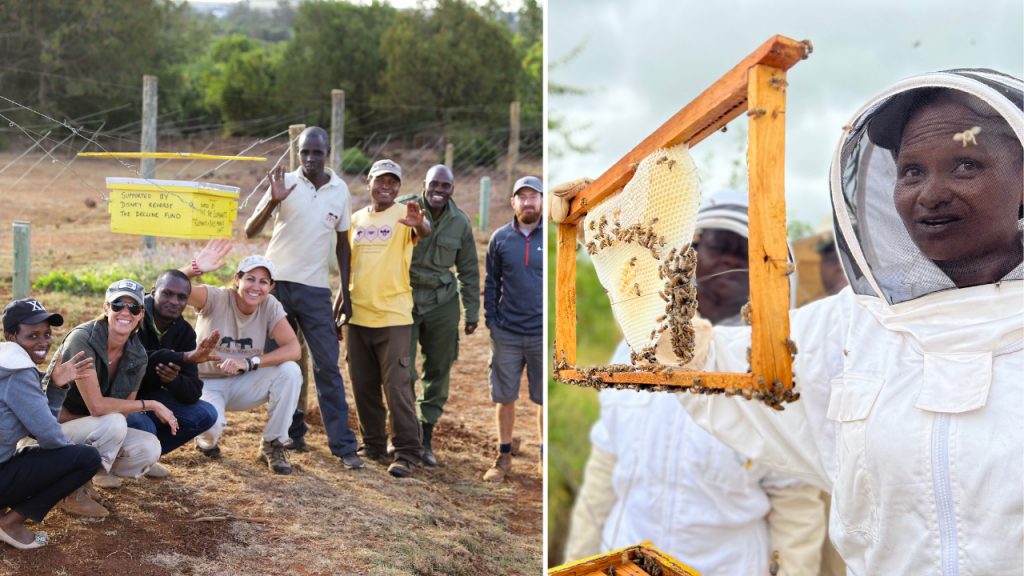By Beth Monnig, Marketing Strategy Associate Manager, Disney Imagination Campus
How do you use science, technology and innovation to practice sustainability in your community?
You may have heard that in April, we launched Disney Planet Possible, our company-wide initiative that continues our long history of taking action to protect the planet for future generations. One way we have been taking action is through the work of Disney Conservation, which has directed more than $120 million and the expertise of our dedicated teams to support organizations working with communities to save wildlife, inspire action and protect the planet since 1995.
You can learn about Disney Conservation while visiting Disney’s Animal Kingdom Theme Park and speaking with passionate cast members, participating in special educational tours, or experiencing attractions like Kilimanjaro Safaris, an open-air safari of an African savanna.
Kilimanjaro Safaris teaches guests about the importance of conservation efforts to protect endangered animals around the world, and simple ways that we can make a difference for wildlife in our own communities.
One incredible project you may have heard about on Kilimanjaro Safaris is The Elephants and Bees Project, led by an organization called Save the Elephants that has received support for more than 20 years from the Disney Conservation Fund.
African elephants are endangered due to threats from habitat loss, conflict with humans and poaching for their ivory. Conflict with humans has been on the rise due to human population expansion and elephants trampling or eating the crops that farmers and their families depend on.
Disney Team Wildlife scientists and researchers have collaborated with Save the Elephants to use science and technology to solve this challenge and better support both elephants and African farmers.
Their solution: Beehive Fences

(Credit: Save the Elephants)
What is it?
Through research and observation along with farmers in Kenya, researchers learned that elephants are afraid of African bees. In fact, when elephants hear the sound of buzzing bees they react dramatically and retreat. Although elephants’ skin is thick, they also have sensitive parts that bees can sting, such as the ears and eyes and inside their trunks, and they prefer to run away instead of getting stung! With the help of our elephant family at Disney’s Animal Kingdom, special collars that record elephant vocalizations, and a series of audio playback experiments, scientists learned that elephants even talk to each other and alert other elephants nearby to avoid an area with bees.
A beehive fence is a low-cost, eco-friendly barrier made of beehives hung between posts and inter-connected by thin wires that surround farmland to discourage elephants from eating and trampling crops.
These swinging, buzzing barriers are much cheaper than alternative solutions like electric fences and the bees can actively pollinate the crops for the farmers at the same time. They have been successful in keeping up to 80% of elephants out of the farms.
How do we use it?
Hives, or dummy hives, are hung every ten meters and linked together in a specific formation so that if an elephant touches one of the hives, or interconnecting wires, the beehives all along the fence line will swing and release the bees.
Not only do the beehive fences protect the elephants from human conflict, the fences also benefit the farmers. They can use and sell the honey produced by the beehives as an alternate source of income. The team has branded this honey “Elephant-Friendly Honey.”
Where do we use it?
In total, 22 countries in Africa and Asia are now trying beehive fences as eco-elephant deterrents for communities. Save the Elephants scientists are helping to ensure that at-risk farms receive this knowledge, as well as train farmers in how to co-exist peacefully with animals like elephants, while still protecting their homes and crops.

(Credit: Save the Elephants)
Disney continues to support Save the Elephants through both philanthropic grants from the Disney Conservation Fund and ongoing collaboration with Disney Conservation Team Wildlife to advance science, technology and innovation to help communities peacefully coexist with elephants. Disney Team Wildlife is currently helping Save the Elephants research whether bees provide the additional bonus of increasing the productivity of the crops through pollination. And today, beekeepers like Loise Njeru, one of the newest Elephants and Bees staff members (pictured above), are bringing new techniques, training, motivation and hope to local communities managing beehive fences as they navigate climate changes and devastating droughts that threaten bees, honey, production, elephants, livestock, crops and people.
How do you use science, technology and innovation to help benefit your community or make it more sustainable? Join us to picture what’s possible by sharing images of what gives you hope for the future of the planet with the hashtag #DisneyPlanetPossible.
Curious to learn more? Check out the Science & Technology workshops at our East Campus in Walt Disney World Resort and our West Campus in Disneyland Resort for a discovery of the real-world application of science, technology, engineering, art, and math at some of our most popular attractions! Sign up for our e-newsletter to stay up to date on all things Disney Imagination Campus and explore all our academic workshops to see how we inspire imagination-powered learning.




